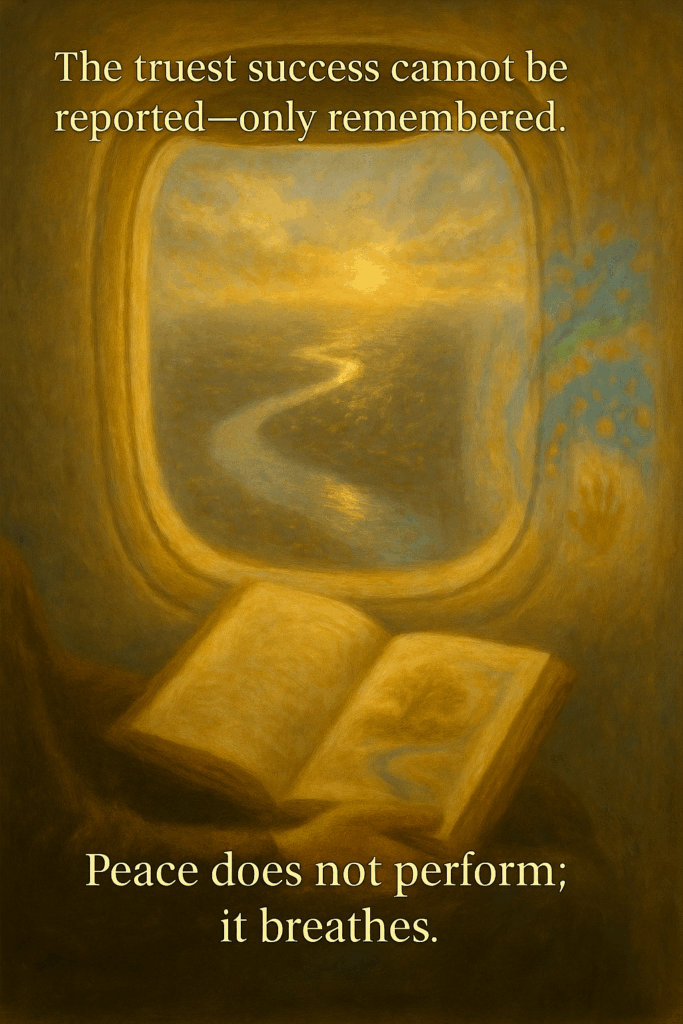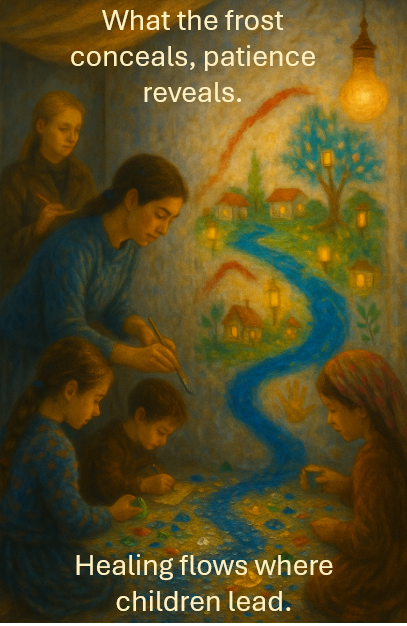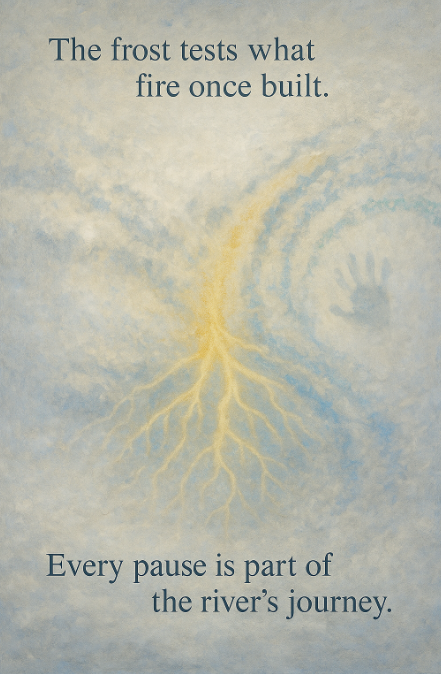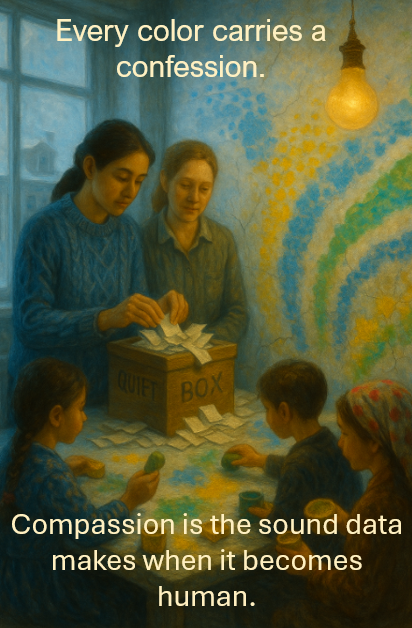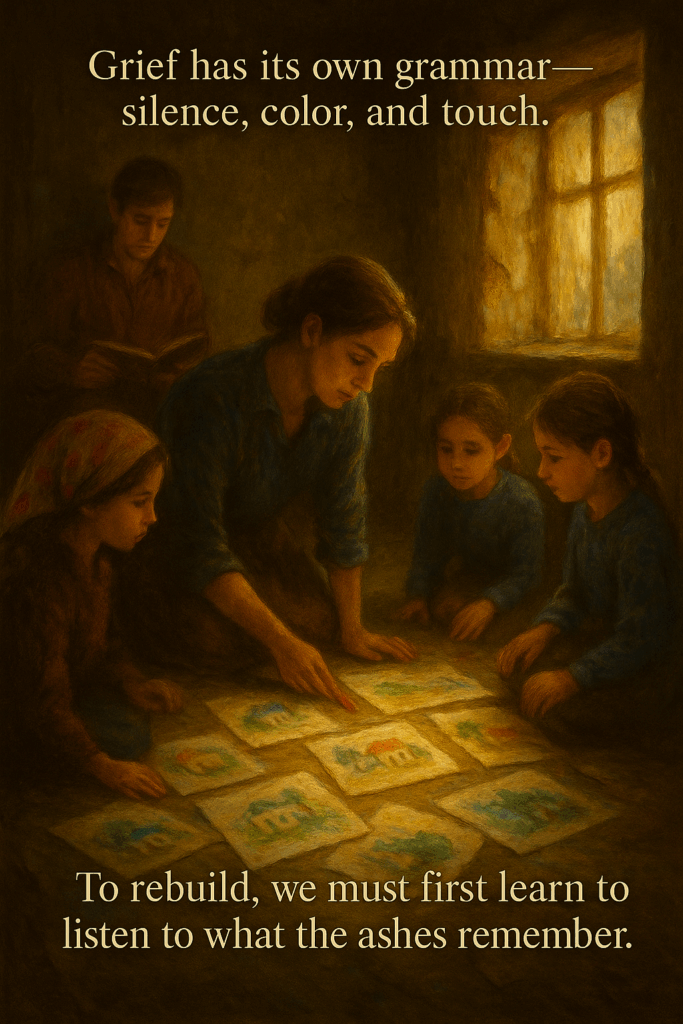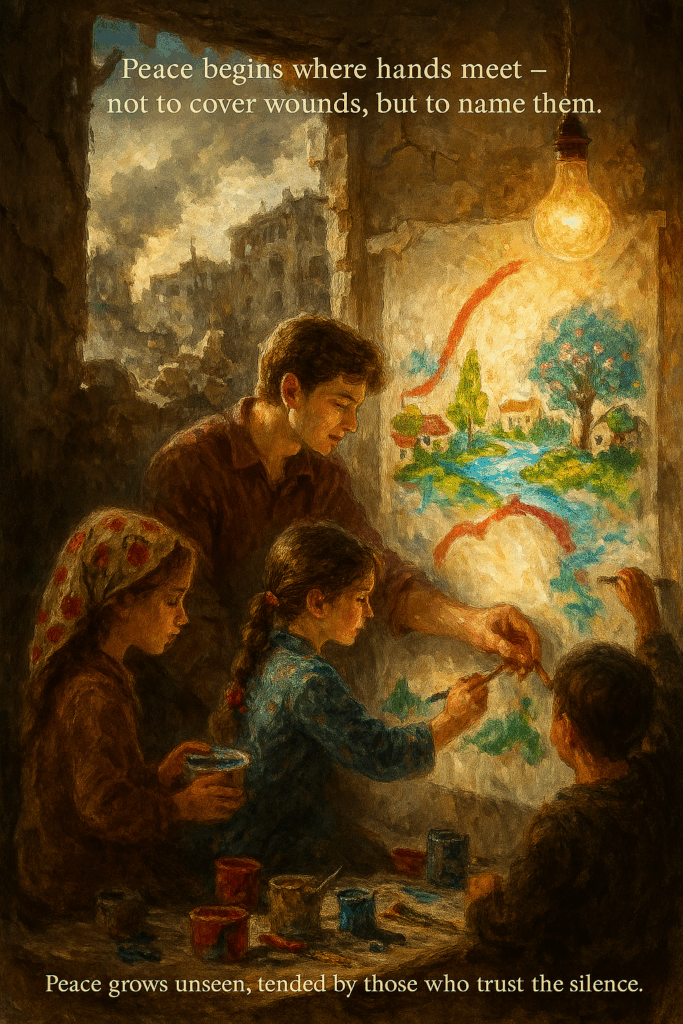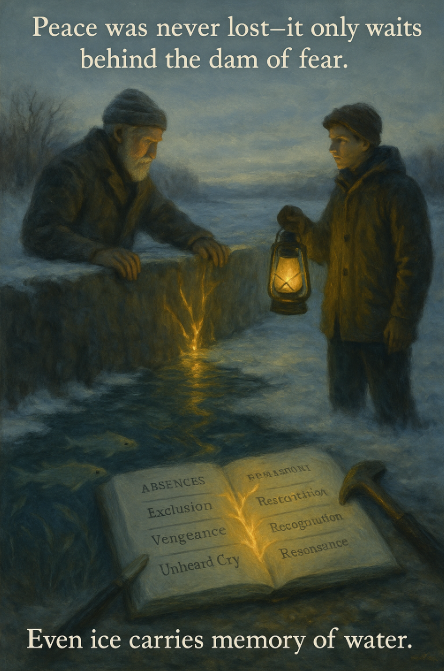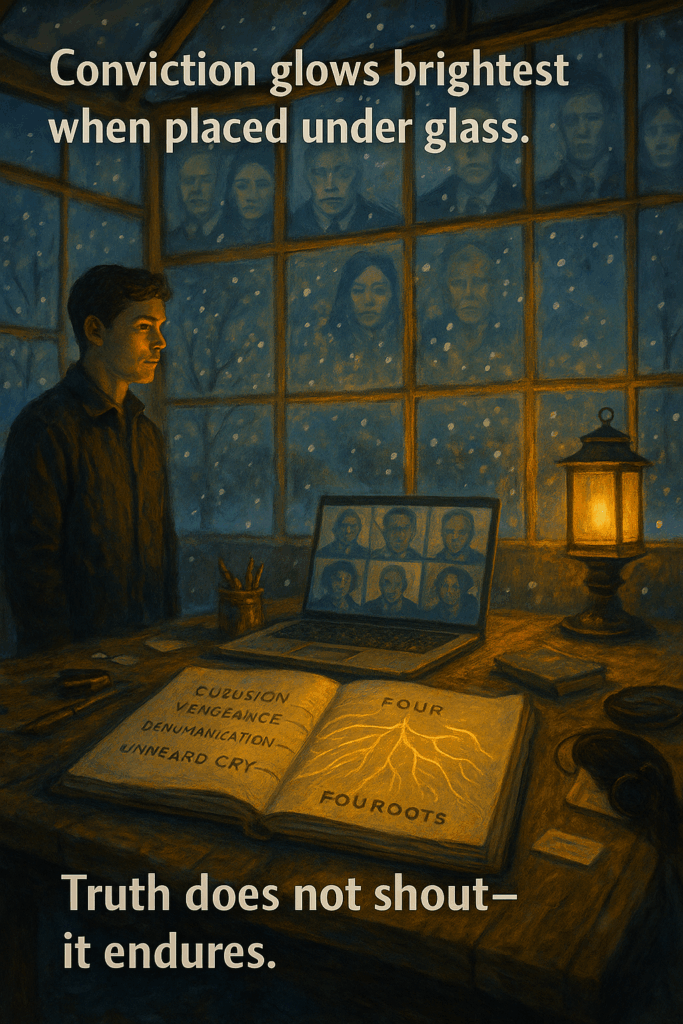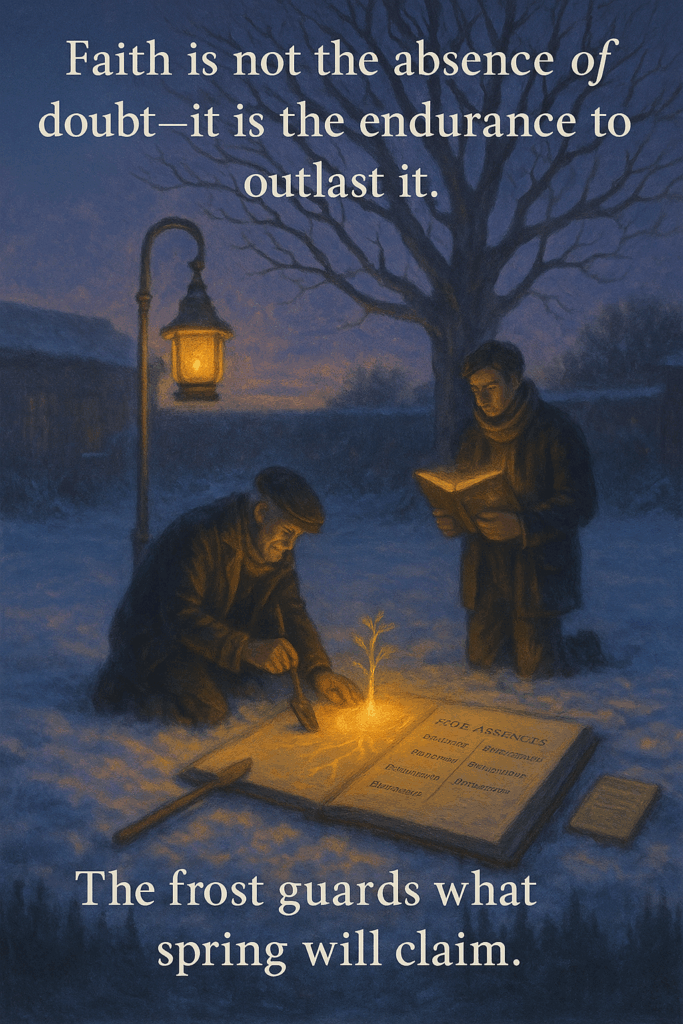The Circle of Flow
Morning arrived like a long exhale — soft, almost invisible. The city outside the shelter still carried scars, but inside, the air felt different, lighter, rearranged by unseen hands. For weeks, the mural had grown under many fingers. Each color had found its counterpart; each silence had learned where to rest. The Circle no longer […]
The Circle of Flow Read More »
Leadership